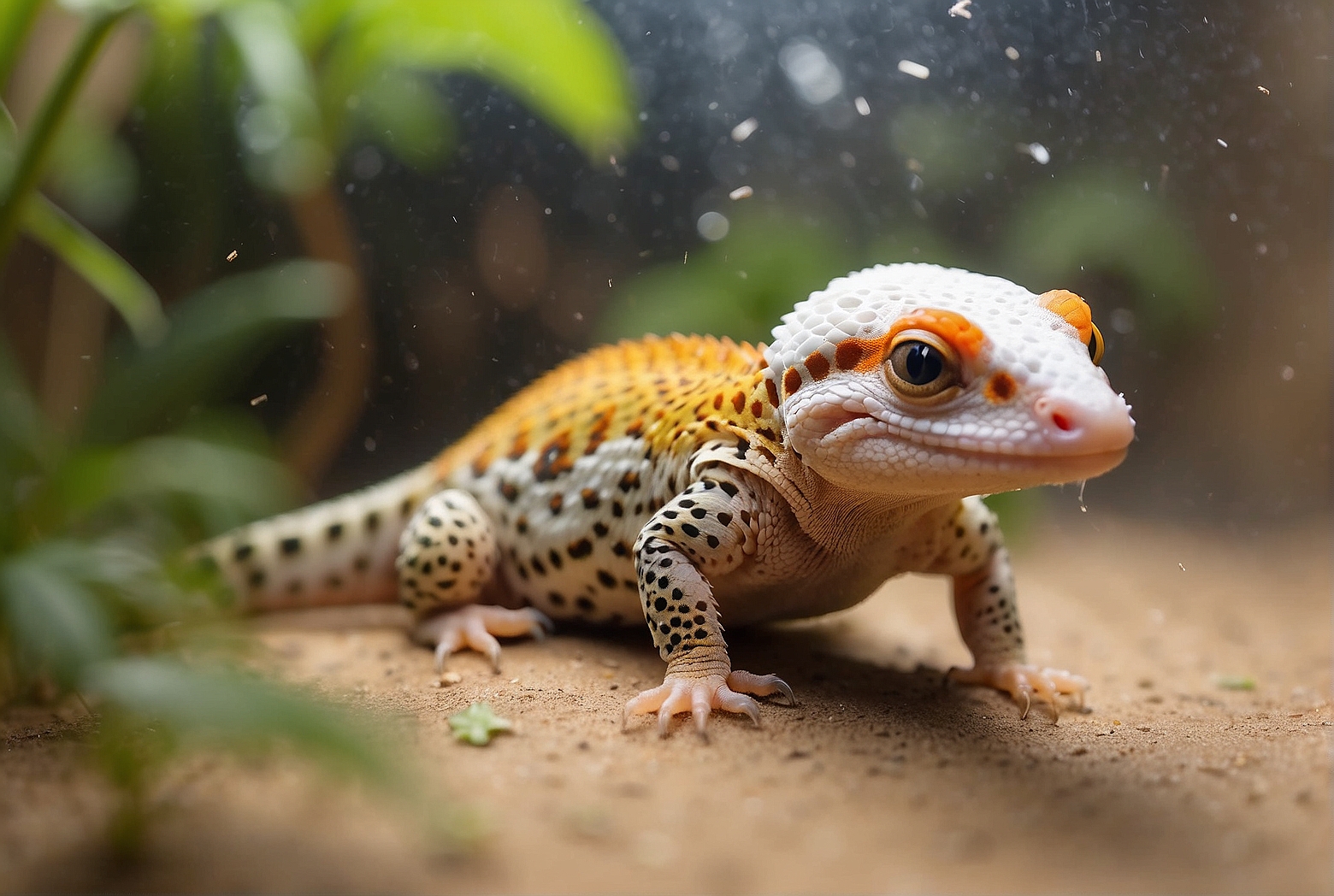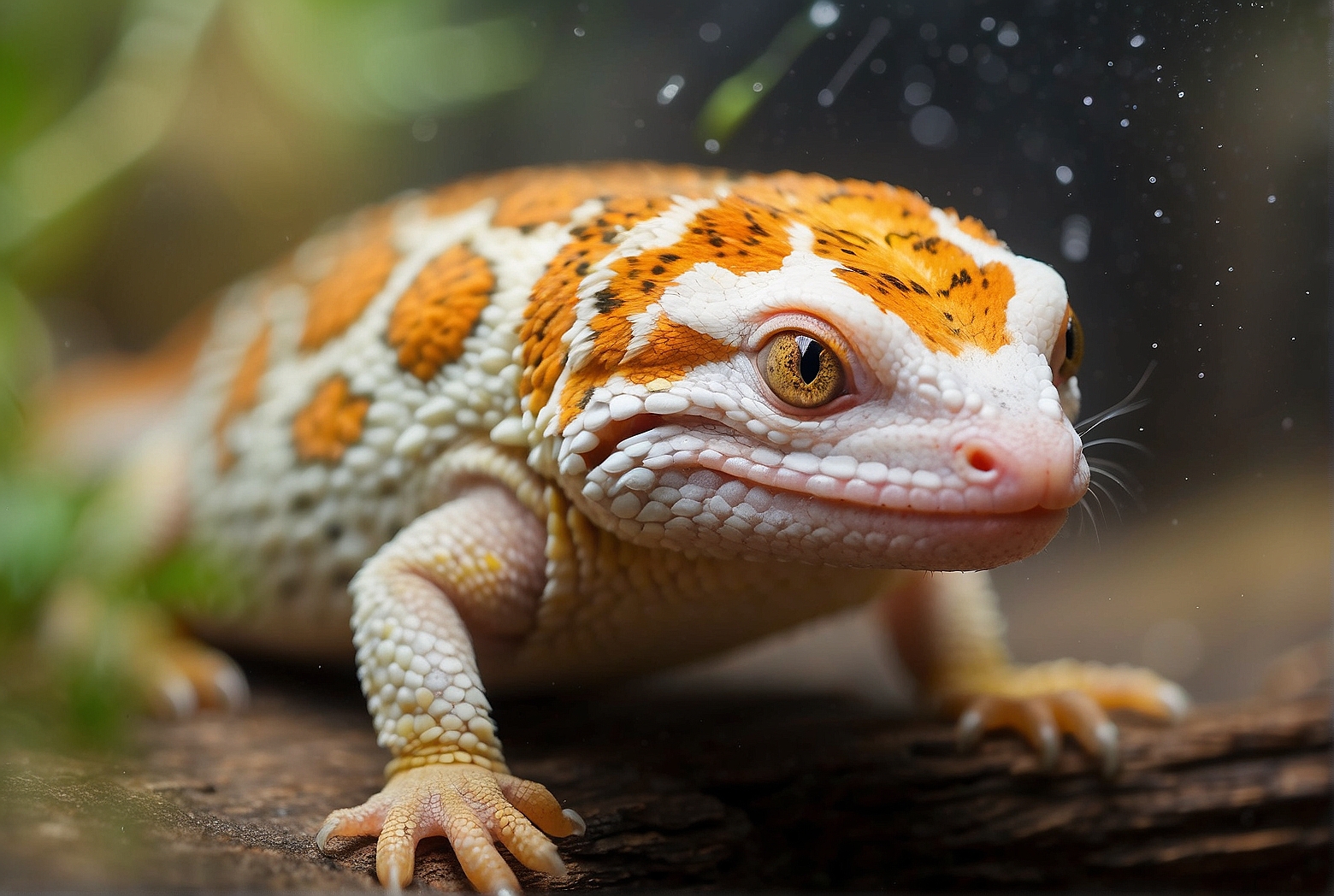Do you have a leopard gecko as a pet and are concerned about the humidity levels in its enclosure? If so, you’re in the right place! In this article, we will explore the issue of leopard gecko humidity being too high and provide you with valuable insights and tips to help you ensure the optimal living conditions for your adorable reptilian friend. So, let’s dive into the world of leopard geckos and the importance of maintaining the right humidity levels for their well-being.
Causes of High Humidity in Leopard Geckos
Inadequate Ventilation
One of the reasons why there may be high humidity levels in your leopard gecko’s enclosure is inadequate ventilation. If the enclosure does not allow for proper airflow, moisture can become trapped, resulting in elevated humidity. This can be particularly problematic in enclosed glass tanks or enclosures with poor ventilation systems. It is important to ensure that your gecko’s enclosure has sufficient airflow to prevent the buildup of excess moisture.
Lack of Proper Substrate
The type of substrate used in your leopard gecko’s habitat can also contribute to high humidity levels. Substrates that retain moisture, such as moss or coconut fiber, can create a damp environment that increases humidity. Instead, opt for substrates that allow for proper moisture evaporation, such as reptile carpet or paper towels. These substrates will help maintain a drier and more suitable humidity level for your gecko.
Water Dish Placement
Another factor that can lead to high humidity in your leopard gecko’s enclosure is the placement of the water dish. If the water dish is placed directly under the heat source, such as a heat lamp or heat mat, the heat can cause the water to evaporate more quickly, raising the overall humidity. To prevent this, ensure that the water dish is placed in a cooler area of the enclosure away from any direct heat sources.
Consequences of High Humidity
Respiratory Infections
High humidity levels can increase the risk of respiratory infections in leopard geckos. Excessive moisture in the air can create a breeding ground for bacteria, leading to respiratory issues such as pneumonia. Geckos with respiratory infections may exhibit symptoms such as wheezing, difficulty breathing, and nasal discharge. It is crucial to maintain optimal humidity levels to prevent these potentially serious health issues.
Scale Rot
Scale rot is a common consequence of high humidity in leopard geckos. It occurs when damp conditions persist, leading to the growth of bacteria and fungi on the gecko’s skin. Scale rot can cause skin discoloration, lesions, and in severe cases, even tissue damage. Regularly monitoring and controlling humidity levels in the enclosure can help prevent this painful condition.

Fungal Infections
High humidity levels can also contribute to the development of fungal infections in leopard geckos. Fungi thrive in damp environments, and when exposed to prolonged moisture, geckos may develop skin or respiratory fungal infections. These infections can cause skin discoloration, lesions, and respiratory distress. Maintaining proper humidity levels is essential to prevent the growth and spread of fungal infections.
Ideal Humidity Levels for Leopard Geckos
Recommended Range
The ideal humidity range for leopard geckos is between 30% and 40%. This range mimics the natural arid environment of their native habitats and helps ensure their overall health and well-being. It is important to note that maintaining stable humidity within this range is crucial, as fluctuations can also stress your gecko. By providing the appropriate humidity levels, you can help prevent potential health issues and create a comfortable living environment for your leopard gecko.
Importance of Humidity
Maintaining the ideal humidity levels for your leopard gecko is vital for various aspects of their health and physiological functions. Suitable humidity helps support shedding, which is a natural process for geckos to replace old skin with new growth. Adequate moisture in the air allows for the proper removal of the old skin, preventing complications that may arise from incomplete shedding. Additionally, maintaining optimal humidity levels also aids in digestion and overall hydration of your leopard gecko.
Measuring Humidity in the Leopard Gecko Enclosure
Hygrometer
To ensure the humidity levels in your leopard gecko’s enclosure are within the recommended range, it is important to use a hygrometer. A hygrometer is a device specifically designed to measure humidity levels. There are various types available, including digital and analog hygrometers. It is recommended to use a digital hygrometer for its accuracy and ease of reading. By regularly monitoring humidity levels with a hygrometer, you can make necessary adjustments to maintain the optimal environment for your gecko.
Location of Hygrometer
When placing the hygrometer in the enclosure, it is crucial to position it in an area that accurately represents the overall humidity levels. Avoid placing the hygrometer directly near the heat source or water dish, as these areas may have higher humidity levels compared to the rest of the enclosure. Instead, position the hygrometer in a central location, ensuring it is not obstructed by any decorations or enclosure structures. This will provide a more accurate reading of the overall humidity in the leopard gecko’s habitat.
Avoiding Misting Techniques
While misting may be a common method to increase humidity in reptile enclosures, it is not recommended for leopard geckos. Misting can lead to excessive moisture buildup, resulting in high humidity levels. Instead, it is advisable to focus on other techniques to maintain optimal humidity. By avoiding misting, you can prevent potential health issues related to high humidity and ensure a healthier living environment for your leopard gecko.

Reducing Humidity in the Enclosure
Increasing Ventilation
To lower humidity levels in your leopard gecko’s enclosure, improving ventilation is crucial. Ensure that there are adequate openings or vents in the enclosure to allow for proper air circulation. If using a glass tank, consider adding extra ventilation by installing mesh screens or drilling small holes in the tank’s lid or sides. By enhancing airflow, excess moisture can escape, helping to reduce humidity levels and create a more suitable environment for your gecko.
Using Appropriate Substrate
Choosing the right substrate is essential when aiming to reduce humidity in the gecko enclosure. Opt for substrates that promote moisture evaporation, such as reptile carpet or paper towels. These substrates do not retain excess moisture like moss or coconut fiber, helping to maintain drier humidity levels within the enclosure. Regularly monitor the substrate and replace it if it becomes damp to prevent the buildup of excessive humidity.
Avoiding Overfilling Water Dish
To prevent unnecessary moisture in the enclosure, it is vital to avoid overfilling the water dish. Keep the water dish filled with a sufficient amount of water for your gecko’s daily needs but avoid filling it to the point where water spills or splashes onto the surrounding substrate. By maintaining an appropriate water level, you can help reduce humidity levels and minimize the chances of high humidity-related health issues.
Maintaining Optimal Humidity in the Enclosure
Misting Techniques
While misting is not advisable for increasing humidity levels, it can be used strategically to maintain healthy humidity levels in the leopard gecko’s enclosure. Instead of misting the entire enclosure, focus on misting specific areas such as the gecko’s moist hideout. This targeted approach ensures that the overall humidity remains within the recommended range without risking excessive moisture buildup. Be sure to monitor the overall humidity levels regularly to adjust misting frequency accordingly.
Creating Humid Hideouts
Leopard geckos appreciate a humid hideout within their enclosure, as it helps aid shedding and provides a comfortable retreat. To create a humid hideout, place a small container filled with moistened substrate, such as damp paper towels or vermiculite, in one corner of the enclosure. This localized humidity will provide the gecko with the necessary moisture without affecting the overall humidity levels in the rest of the enclosure. Periodically replenish the substrate to maintain the desired humidity level.
Daily Monitoring
Regular monitoring of the humidity levels in the leopard gecko’s enclosure is crucial. Use the hygrometer to check the humidity readings at least once a day, preferably at the same time each day for consistency. If the humidity falls outside the recommended range, take appropriate actions to bring it back to the desired level. By maintaining a vigilant approach and making necessary adjustments as needed, you can ensure that your leopard gecko’s enclosure remains at optimal humidity levels.
Preventing High Humidity Issues in Leopard Geckos
Proper Husbandry Practices
Implementing proper husbandry practices is essential in preventing high humidity issues in leopard geckos. This includes ensuring the enclosure is properly ventilated, using suitable substrates, and placing the water dish in the correct location. Additionally, maintaining the enclosure’s temperature and lighting levels within the recommended range can also contribute to a healthier and more controlled humidity environment. By consistently following these practices, you can minimize the risk of high humidity-related complications.
Regular Enclosure Cleaning
Regularly cleaning the leopard gecko’s enclosure is crucial in preventing the buildup of excessive moisture and maintaining optimal humidity levels. Remove any soiled substrate, feces, or uneaten food promptly to prevent mold or bacterial growth, which can contribute to high humidity. Wipe down the enclosure walls and decorations to remove any moisture or debris. By keeping the enclosure clean and dry, you can create a healthier living environment for your gecko.
Monitoring Humidity Levels
Continuously monitoring the humidity levels in the leopard gecko’s enclosure is key to preventing high humidity issues. By regularly checking the hygrometer, you can promptly identify any fluctuations or deviations from the recommended range. It is important to address any changes in humidity promptly, whether they are due to environmental factors or equipment malfunctions. By staying vigilant and taking proactive measures, you can maintain a consistently optimal humidity level in the gecko’s habitat.
Seeking Veterinary Assistance
Recognizing Signs of High Humidity
It is essential to be able to recognize the signs of high humidity in leopard geckos. Some common signs include excessive moisture condensation on the enclosure walls, respiratory symptoms such as wheezing or difficulty breathing, skin discoloration or lesions, and a general decrease in activity or appetite. If you notice any of these signs, it is important to take immediate action to address the humidity issue and consult with a reptile veterinarian if necessary.
Consulting a Reptile Veterinarian
If you suspect that your leopard gecko is experiencing high humidity-related health issues or if you are unsure of how to properly address the humidity levels in their enclosure, it is crucial to seek the advice of a reptile veterinarian. A reptile veterinarian with expertise in leopard geckos can provide guidance, conduct necessary diagnostic tests, and recommend appropriate treatment options to ensure the health and well-being of your gecko.
Treatment Options
The treatment options for high humidity-related health issues in leopard geckos can vary depending on the specific condition and its severity. In mild cases, adjusting the humidity levels in the enclosure and implementing proper husbandry practices may be sufficient to resolve the issue. However, more severe cases may require additional interventions such as antibiotics for respiratory infections or antifungal medications for fungal infections. Only a reptile veterinarian can accurately diagnose the condition and recommend the most appropriate treatment plan for your gecko.
Conclusion
Maintaining optimal humidity levels in a leopard gecko’s enclosure is vital for their overall health and well-being. By understanding the causes and consequences of high humidity, as well as implementing appropriate measures to measure, reduce, and maintain humidity levels, you can create a suitable environment that promotes the health and happiness of your leopard gecko. Always prioritize proper husbandry practices, regular monitoring, and consulting with a reptile veterinarian when necessary to ensure the best care for your gecko.
